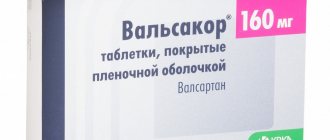Photo: medic.ru
Photo: yandex.ru
Photo: yandex.ru
Photo: gorfarma.ru
Flexid is an antibacterial drug. Belongs to the group of fluoroquinolones. The active substance of Flexid is Levofloxacin. Has a wide spectrum of action.
The antibiotic Flexid is prescribed by a doctor. The duration of treatment with the drug depends on the indications and the severity of the disease.
Instructions for use Flexid
| Active substance | Levofloxacin |
| pharmachologic effect | Antimicrobial |
| Vacation conditions | Prescription |
| Release form | Film-coated tablets; Solution for infusion |
| Pregnancy and breastfeeding | Contraindicated |
| Age group | 18+ |
| Best before date | 3 years |
| Storage conditions | Not higher than +25 °C |
| Analogs | Levofloxacin; Lefoccin; Tavanik; Leflobact; Levolet R; Lebel; Glevo; Remedia; Floracid; Roflox-Scan; Hyleflox |
| Category | Antibacterial drugs |
| Manufacturer | SANDOZ (Slovenia); LEK (Slovenia) |
| Price | 242 - 810 rub. |
Directions for use and dosage
Flexid tablets
Orally, 1 or 2 times a day, regardless of meals, without chewing and with a sufficient amount of liquid. Flexid tablets should be taken at least 2 hours before or 2 hours after taking antacids containing magnesium and/or aluminum, iron salts or sucralfate.
The dose of the drug and duration of treatment depend on the indication for use and the severity of the disease. When selecting doses, the tablet can be divided into parts according to the separation line. Treatment with Flexid should continue for at least another 48–72 hours after the symptoms of the disease disappear.
Use of the antibiotic Flexid in patients with normal renal function (Cl creatinine >50 ml/min):
- Sinusitis: 500 mg 1 time per day - 10-14 days.
- Exacerbation of chronic bronchitis: 250 or 500 mg 1 time per day - 7-10 days.
- Community-acquired pneumonia: 500 mg 1-2 times a day - 7-14 days; IV – 500 mg 1-2 times/day.
- Uncomplicated urinary tract infections: 250 mg 1 time per day for 3 days; IV – the dose is the same.
- Prostatitis: 500 mg 1 time per day - 28 days.
- Complicated urinary tract infections, including pyelonephritis: 250 mg 1 time per day - 7-10 days.
- Infections of the skin and soft tissues: 250-500 mg 1-2 times a day - 7-14 days; IV – 500 mg 2 times/day.
- Intra-abdominal infection: 500 mg 1 time per day - 7-14 days (in combination with antibacterial drugs acting on anaerobic flora).
- Septicemia/bacteremia associated with the above indications: 2 tables. 250 mg or 1 tablet. 500 mg 1-2 times a day (500 and 1000 mg of levofloxacin, respectively) – 10-14 days.
- Infections of the abdominal cavity: 500 mg 1 time per day – 7–14 days (in combination with antibacterial drugs acting on anaerobic flora).
- As part of complex therapy for drug-resistant forms of tuberculosis: 500 mg 1–2 times a day – up to 3 months.
The maximum daily dose is 1000 mg.
For patients with impaired renal function, the following dosage regimen is recommended:
Creatinine clearance, ml/min, Flexid dosage 250 mg/24 h
- 15-20 ml/min first dose 250 mg/24 hours, then 125 mg/24 hours;
- 19-10 ml/min first dose 250 mg/24 hours, then 125 mg/48 hours;
- <10 ml/min (including hemodialysis and CAPD) first dose 250 mg/24 hours, then 125 mg/48 hours.
Creatinine clearance, ml/min, Flexid dosage 500 mg/24 h
- 15-20 ml/min first dose 500 mg/24 h, then 250 mg/24 h;
- 19-10 ml/min first dose 500 mg/24 hours, then 125 mg/24 hours;
- <10 ml/min (including hemodialysis and CAPD) first dose 500 mg/24 hours, then 125 mg/24 hours.
Creatinine clearance, ml/min, Flexid dosage 500 mg/12 h
- 15-20 ml/min first dose 500 mg/24 hours, then 250 mg/12 hours;
- 19-10 ml/min first dose 500 mg/24 hours, then 125 mg/12 hours;
- <10 ml/min (including hemodialysis and CAPD) first dose 500 mg/24 hours, then 125 mg/24 hours.
No additional doses are required after hemodialysis or continuous ambulatory peritoneal dialysis (CAPD).
Flexid for cystitis
Doctors often prescribe drugs with the active ingredient Levofloxacin for cystitis. Such a drug is Flexid. It is well suited for the treatment of all forms of cystitis: postoperative cystitis, acute and chronic cystitis, post-traumatic. Prescribe 250 mg (1 tablet) of the drug once a day (morning or evening).
Flexid before or after meals
According to the instructions for medical use, food intake has virtually no effect on the absorption of Flexid, so the drug can be used at any time, without chewing and with a sufficient amount of water.
Compound
Flexid tablets
- active ingredient: Levofloxacin (in the form of hemihydrate) 256.23 mg or 512.46 mg (250 mg or 500 mg Levofloxacin);
- excipients: lactose monohydrate - 13.27/26.54 mg; povidone - 17.5/35 mg; sodium carboxymethyl starch - 12/24 mg; talc - 9/18 mg; colloidal silicon dioxide anhydrous - 6.5/13 mg; croscarmellose sodium - 4.5/9 mg; glyceryl dibehenate - 6/12 mg;
- film shell: hypromellose - 4.962/9.924 mg; hyprolose - 1.238/2.476 mg; macrogol 6000 - 1/2 mg; iron oxide yellow - 0.069/0.138 mg; iron oxide red - 0.069/0.138 mg; titanium dioxide - 2.162/4.324 mg; talc - 0.5/1 mg.
The structural formula of Levofloxacin is C18H20FN3O4.
Photo: wikipedia.org Solution
- active ingredient: Levofloxacin hemihydrate 5.12 mg (5 mg Levofloxacin);
- excipients: sodium chloride – 9 mg, water for injection – up to 1 ml, sodium hydroxide solution 0.1M and hydrochloric acid solution 1M* – qs
Indications for use
Infections caused by sensitive strains of microorganisms:
- ENT infections (acute sinusitis);
- infections of the lower respiratory tract (exacerbation of chronic bronchitis, community-acquired pneumonia);
- urinary tract infections (cystitis, pyelonephritis);
- skin and soft tissue infections;
- abdominal infections;
- as part of complex therapy of drug-resistant forms of tuberculosis;
- in the treatment of bacteremia/septicemia associated with the above indications.
Contraindications
- epilepsy;
- tendon lesions that occurred during previous treatment with fluoroquinolones;
- children and adolescents up to 18 years of age;
- pregnancy;
- lactation period (breastfeeding);
- hypersensitivity to levofloxacin or other quinolones, and/or to other components of the drug.
Side effects
- Allergic reactions: uncommon – itching, skin rash; rare – urticaria, bronchospasm, shortness of breath; very rare - angioedema, hypotension, anaphylactic shock, allergic pneumonitis, photosensitivity; in some cases - Stevens-Johnson syndrome, toxic epidermal necrolysis (Lyell's syndrome), erythema multiforme.
- From the digestive system and metabolism: common - nausea, diarrhea (including blood), increased activity of liver enzymes (ALT, AST); uncommon – loss of appetite, vomiting, abdominal pain, dyspepsia, hyperbilirubinemia; rare – enterocolitis; very rare - hypoglycemia, hepatitis, pseudomembranous colitis.
- From the nervous system: uncommon – headache, dizziness, sleep disturbance; rare – paresthesia, tremor, anxiety, agitation, confusion, convulsions; very rare - hallucinations, extrapyramidal disorders and other coordination disorders.
- From the senses: very rare - disturbances of vision, hearing, smell, taste and tactile sensitivity.
- From the cardiovascular system: rare – tachycardia, hypotension; very rare – vascular collapse.
- From the musculoskeletal system: rare – arthralgia, myalgia, tendonitis; very rare – tendon rupture (for example, Achilles tendon), muscle weakness (of particular importance for patients with myasthenia gravis); in some cases - rhabdomyolysis.
- From the urinary system: uncommon – hypercreatininemia; very rare - interstitial nephritis, deterioration of kidney function up to acute renal failure.
- From the blood system and hematopoietic organs: uncommon – eosinophilia, leukopenia; rare – neutropenia, thrombocytopenia; very rare – agranulocytosis; in some cases - hemolytic anemia, pancytopenia.
- Other: uncommon – asthenia; very rare – fever, vasculitis.
pharmachologic effect
Flexid is a broad-spectrum antimicrobial bactericidal drug that blocks DNA gyrase and topoisomerase IV, and inhibits DNA synthesis.
Active against aerobic gram -positive microorganisms: Enterococcus faecalis, staphylococcus aureus (strains sensitive to meticillin), staphylococcus haemolyticus (strains sensitive to methicillin), Staphylococcus saprop Hyticus, Streptococcus Group C and G, Streptococcus Agalactiae, Streptococcus Pneumoniae, Streptococcus Pyogenes; aerobic gram-negative microorganisms: Acinetobacter baumannii, Citrobacter freundii, Eikenella corrodens, Enterobacter aerogenes, Enterobacter agglomerans, Enterobacter cloacae, Escherichia coli, Haemophilus influenzae, Haemophilus parainfluenzae, Klebsiella oxytoca, Klebsiella pneumoniae, Moraxella catarrhalis, Morganella morganii, Pasteurella m ultocida, Proteus mirabilis, Proteus vulgaris, Providencia rettgeri, Providencia stuartii, Pseudomonas aeruginosa, Serratia marcescens; anaerobic microorganisms: Bacteroides fragilis, Clostridium perfringens, Peptostreptococcus spp.; other microorganisms: Chlamydia pneumoniae, Chlamydia psittaci, Legionella pneumophila, Mycoplasma pneumoniae.
Aerobic gram-positive microorganisms are intermediately sensitive to Flexid: Staphylococcus haemolyticus (methicillin-resistant strains); aerobic gram-negative microorganisms: Burkholderia cepacia; anaerobic microorganisms: Bacteroides ovatus, Bacteroides thetaiotamicron, Bacteroides vulgatus, Clostridium difficile.
Staphylococcus aureus (methicillin-resistant strains) is insensitive to levofloxacin.
Precautionary measures
Caution must be exercised
- when prescribing levofloxacin in combination with drugs that affect tubular secretion, such as probenecid and cimetidine, especially in the treatment of patients with impaired renal function; in the treatment of patients with a predisposition to epileptic seizures, during treatment with fenbufen and similar non-steroidal anti-inflammatory drugs (NSAIDs) or drugs that lower the threshold for epileptic seizures, such as theophylline;
- in patients with latent or obvious disorders of glucose-6-phosphate dehydrogenase activity due to the risk of developing hemolytic reactions.
Use during pregnancy and breastfeeding
Flexid is contraindicated during pregnancy and breastfeeding.
Use for liver dysfunction
If liver function is impaired, no special dose adjustment is required, since levofloxacin does not undergo significant metabolism in the liver.
Use for renal impairment
In patients with impaired renal function, the dose of the Flexid antibiotic is adjusted depending on the QC.
Use of Flexid in children
Contraindicated in children and adolescents under 18 years of age.
Use in elderly patients
Individual dose selection for elderly patients is not required (however, it is necessary to monitor creatinine clearance, since the likelihood of a concomitant decrease in renal function is higher).
special instructions
Flexid tablets should be taken 2 hours before or 2 hours after taking iron salts, antacids and sucralfate, as there may be a decrease in its absorption. If simultaneous use is necessary, sucralfate should be taken 2 hours after taking Flexid.
- In patients taking vitamin K antagonists concomitantly, it is necessary to monitor blood clotting parameters.
- In rare cases observed during treatment with quinolones, tendinitis can sometimes lead to rupture of ligaments, especially the Achilles tendon. This side effect occurs within 48 hours after the start of therapy. For older people and patients taking corticosteroids, there is an increased risk of developing tendonitis. Therefore, during treatment with levofloxacin, careful monitoring of the condition of such patients is necessary. If tendonitis is suspected (patients must be informed about its symptoms), Flexid should be stopped immediately and appropriate treatment (for example, immobilization) should be started.
- Diarrhea (especially if severe, persistent and/or bloody) during or after taking Flexid may be a symptom of Clostridium difficile disease, the most severe form of which is pseudomembranous colitis. If pseudomembranous colitis is suspected, Flexid should be stopped immediately and symptomatic treatment (eg, oral vancomycin) should be given. In this condition, drugs that inhibit peristalsis are contraindicated.
- Combination therapy is required to treat nosocomial infections caused by Pseudomonas aeruginosa.
- During treatment with Flexid, direct sunlight and artificial UV radiation (solarium) should be avoided to avoid photosensitivity.
- Care should be taken when driving vehicles and engaging in other potentially hazardous activities that require increased concentration and speed of psychomotor reactions.
Pharmacodynamics and pharmacokinetics
Since levofloxacin is an antibacterial compound , the drug has bactericidal properties that have a wide range of applications. Flexid blocks topoisomerase, as well as DNA gyrase , thereby stopping the synthesis of new DNA .
It is worth especially emphasizing that this medicinal compound is active against the vast majority of harmful strains of viruses both in vivo and in vitro , i.e. both when tested in laboratory conditions and on living organisms, including humans. The drug is used to suppress the activity of gram-negative and gram-positive aerobic , as well as anaerobic microorganisms .
Flexid copes well with resistant, moderately sensitive, methicillin-sensitive, penicillin-sensitive and ampicillin-sensitive , as well as so-called hospital infections , including those requiring combined therapeutic treatment, for example, Salmonella spp., Pseudomonas aeruginosa, Serratia spp. and others.
During scientific studies, it was proven that due to the structural features of levofloxacin , the use of the drug compound together with other antimicrobial agents does not provoke cross-resistance . When used orally, Flexid is quickly and almost completely absorbed from the stomach.
its maximum concentration (Cmax) in blood plasma approximately 2 hours after direct administration of the drug. It is also noteworthy that meals have a very insignificant effect on the rate of absorption of the active drug compound by the gastrointestinal tract. The drug is quickly distributed in the tissues of the body, and then metabolized and excreted through the kidneys .
Flexid or Ibuklin
Flexid is an antimicrobial drug with the active ingredient Levofloxacin. Indicated for:
- infections of the ENT organs (acute sinusitis);
- infections of the lower respiratory tract (acute bronchitis, chronic bronchitis, community-acquired pneumonia);
- uncomplicated urinary tract and kidney infections;
- complicated urinary tract and kidney infections (including pyelonephritis);
- prostatitis;
- infections of the skin and soft tissues.
With these diseases, an increase in temperature is possible. Accordingly, the combined use of two drugs takes place. Ibuklin is a combination drug that includes 2 active ingredients - Ibuprofen and Paracetamol.
Overdose
Symptoms of an overdose of this drug are:
- states of confusion;
- convulsions;
- nausea;
- tremor;
- loss of consciousness;
- hallucinations;
- erosion of the gastrointestinal mucosa.
To eliminate the consequences of an overdose of Flexid, patients are prescribed drugs belonging to the group of antacid drugs , and the dosage of the antibiotic or its use is completely stopped.
Which is better: Flexid or Tavanik
Tavanik.
Photo: yandex.ru Both drugs are analogues of each other. They belong to the group of fluoroquinolones. The active ingredient of the drugs is Levofloxacin. Flexid is produced in the form of a solution for infusion and tablets. Release form of the drug Tavanik: film-coated tablets, solution for infusion. Both drugs are prescribed by a doctor taking into account the diagnosis. The country of origin of Flexida is Slovenia. Tavanik is produced in France. Flexid is cheaper in cost than Tavanik.
Side effects
The following side effects may occur while using the drug:
- an allergic reaction, expressed in the appearance of itching, rash on the skin, shortness of breath, angioedema, anaphylactic shock, urticaria, pneumonitis, erythema, as well as Stevens-Johnson and Lyell syndrome ;
- diarrhea;
- nausea;
- loss of appetite;
- sleep disturbance;
- vomit;
- colitis;
- hypoglycemia;
- abdominal pain;
- enterocolitis;
- dispersion;
- dizziness;
- tremor;
- headache;
- lack of coordination;
- decreased vision and hearing , as well as loss of charm ;
- tachycardia;
- vascular collapse;
- convulsions;
- hypotension;
- arthralgia;
- muscle weakness;
- nephritis;
- hypercreatininemia;
- thrombocytopenia;
- anemia;
- asthenia;
- vasculitis;
- fever;
- rhabdomyolysis.
Flexid or Amoxiclav
Amoxiclav.
Photo: neboleem.net Flexid belongs to the antimicrobial drugs of the fluoroquinolone group with the active substance – Levofloxacin. Available in the form of tablets and solution for infusion. Amoxiclav is an antibiotic of the penicillin group. It is a combination drug containing Amoxicillin and Clavulanic acid. Release form: film-coated tablets, powder for the preparation of a suspension for oral administration, powder for the preparation of a solution for intravenous administration, dispersible tablets. Amoxiclav is used for diseases such as:
- infections of the upper respiratory tract and ENT organs (including acute and chronic sinusitis, acute and chronic otitis media, retropharyngeal abscess, tonsillitis, pharyngitis);
- infections of the lower respiratory tract (including acute bronchitis with bacterial superinfection, chronic bronchitis, pneumonia);
- urinary tract infections (eg, pyelonephritis);
- gynecological infections;
- skin and soft tissue infections, including human and animal bites;
- infections of bone and connective tissue;
- biliary tract infections (cholecystitis, cholangitis);
- odontogenic infections.
For powder for preparing a solution for intravenous administration, additionally:
- abdominal infections;
- sexually transmitted infections (gonorrhea, chancroid);
- prevention of infections after surgery.
Flexid is indicated from 18 years of age. Amoxiclav is used from birth. Both drugs are prescribed by a doctor based on the results of a medical examination. Amoxiclav is cheaper in cost than Flexid.
Contraindications
Absolute contraindications for Flexid include:
- hypersensitivity to quinolones , as well as levofloxacin ;
- deficiency of the lactase enzyme , which is involved in the process of lactose hydrolysis ;
- pregnancy;
- epilepsy;
- hereditary lactose intolerance;
- age up to 18 years.
This drug should be used with extreme caution when treating patients suffering from:
- diseases of the cardiovascular system;
- renal failure;
- diabetes mellitus;
- lack of glucose-6-phosphate dehydrogenase;
- seizures;
- circulatory disorders;
- porphyria.
In addition, it is worth monitoring the dosage of the drug and the schedule for taking it for elderly people and patients who, simultaneously with Flexid, are taking medications that affect the brain , for example, Ibufen or Theophylline , as well as drugs that interact with tubular secretion ( Cimetidine , Probenecid and others ).
Interaction
The absorption of the active medicinal compound contained in Flexid is reduced by substances such as aluminum, iron salts and magnesium. The bioavailability of the drug is reduced by sucralfate . In addition, the concentration of levofloxacin in the body increases by 13% when taking Fenbufen and Flexid simultaneously, which can lead to an overdose.
Flexid affects prothrombin time , i.e. on blood clotting when used in conjunction with drugs containing warfarin or vitamin K . In addition, this medicine increases the T1/2 level of cyclosporine .
Dosage regimen
Tablets should be taken orally 1 or 2 days a day, regardless of meals, without chewing and with a sufficient amount of liquid.
The dose of the drug and duration of treatment depend on the indication for use and the severity of the disease. When selecting doses, the tablet can be divided into parts according to the separation line. Treatment with Flexid ® should continue for at least another 48-72 hours after the symptoms of the disease disappear. The maximum duration of treatment is no more than 14 days.
Doses for patients with normal renal function (creatinine clearance > 50 ml/min)
Patients with impaired renal function
(creatinine clearance ≤ 50 ml/min)
require individual dose selection.
* - after hemodialysis or continuous ambulatory peritoneal dialysis (CAPD), no additional doses are required.
In case of liver dysfunction
no special dosing is required, since levofloxacin does not undergo significant metabolism in the liver.
Individual selection of doses for elderly patients
not required (however, it is necessary to monitor QC, since there is a higher likelihood of a concomitant decrease in renal function).
special instructions
Flexid tablets should be taken 2 hours before or 2 hours after taking iron salts, antacids and sucralfate, as there may be a decrease in its absorption. If simultaneous use is necessary, sucralfate should be taken 2 hours after taking Flexid ®.
In patients taking vitamin K antagonists concomitantly, it is necessary to monitor blood clotting parameters.
In rare cases observed during treatment with quinolones, tendinitis can sometimes lead to rupture of ligaments, especially the Achilles tendon. This side effect occurs within 48 hours after the start of therapy. For older people and patients taking corticosteroids, there is an increased risk of developing tendinitis. Therefore, during treatment with levofloxacin, careful monitoring of the condition of such patients is necessary. If tendonitis is suspected (patients must be informed about its symptoms), Flexid should be stopped immediately and appropriate treatment (for example, immobilization) should be started.
Diarrhea (especially if severe, persistent and/or bloody) during or after taking Flexid ® may be a symptom of disease caused by Clostridium difficile, the most severe form of which is pseudomembranous colitis. If pseudomembranous colitis is suspected, Flexid should be stopped immediately and symptomatic treatment (for example, oral vancomycin) should be given. In this condition, drugs that inhibit peristalsis are contraindicated.
Combination therapy is required to treat nosocomial infections caused by Pseudomonas aeruginosa.
During treatment with Flexid ® it is necessary to avoid direct sunlight and artificial UV radiation (solarium) to avoid photosensitization.
Impact on the ability to drive vehicles and operate machinery
Care should be taken when driving vehicles and engaging in other potentially hazardous activities that require increased concentration and speed of psychomotor reactions.






